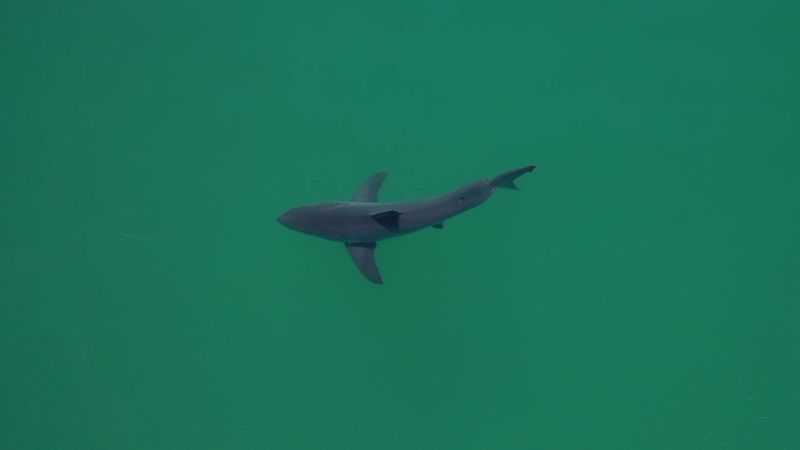California's Padaro Beach has become a hot spot for both surfers and juvenile great white sharks. This unusual mix led to the creation of SharkEye, a research project at the University of California Santa Barbara's Benioff Ocean Science Laboratory (BOSL). SharkEye employs drones to monitor the waters and alert local lifeguards, surf shop owners, and concerned parents of children learning to surf about any shark sightings.
But relying on human pilots to spot sharks from drone footage is far from perfect. A recent study found that human-monitored drones only detect sharks around 60% of the time. The challenge lies in differentiating sharks from other marine life, especially amidst choppy water and glare.
SharkEye is taking a cutting-edge approach, using AI to enhance its shark detection capabilities. The project has trained a computer vision machine learning model to identify great white sharks from drone footage. This AI model is expected to be a valuable tool for improving the accuracy and speed of shark detection, benefiting both beachgoers and the sharks themselves.
Neil Nathan, a project scientist with BOSL, explains the potential of this AI technology: "Automating shark detection⦠can be really helpful for a lot of communities outside of ours here in California."
While shark attacks remain rare, the presence of juvenile great whites near shore has raised concerns in some communities. SharkEye has been diligently monitoring the Padaro Beach coastline for the past five years, even spotting up to 15 juvenile great white sharks in a single day.
Early tests of SharkEye's AI model show promising results. The AI consistently detects most sharks that humans can spot and even identifies some that humans miss, particularly those swimming at deeper depths.
SharkEye is conducting field trials this summer to compare the performance of human pilots with the AI. Drones are flown across the beach area and both the human pilot and the AI model count the number of sharks observed. These results will help refine the AI model and potentially pave the way for automated, AI-assisted shark detection in the future.
The technology has the potential to be expanded beyond Padaro Beach. SharkEye plans to make its AI model publicly available, allowing researchers to further develop it and create a user-friendly app for lifeguards and drone enthusiasts. This could not only improve beach safety but also provide valuable insights into shark behaviour and aid in conservation efforts.
Although AI is becoming increasingly important in managing human-wildlife interactions, its application in shark detection is still nascent. While other organizations, such as Ripper Corp in Australia, have also developed shark identification algorithms for drones, the use of AI for shark detection remains limited.
The development of AI-powered shark detection tools holds great promise for the future. By combining the human eye with the power of AI, communities can strive to create a safer and more harmonious coexistence between humans and sharks.
Article
Technology

AI Shark Spotting: Drones Get Smart to Keep Beachgoers Safe

